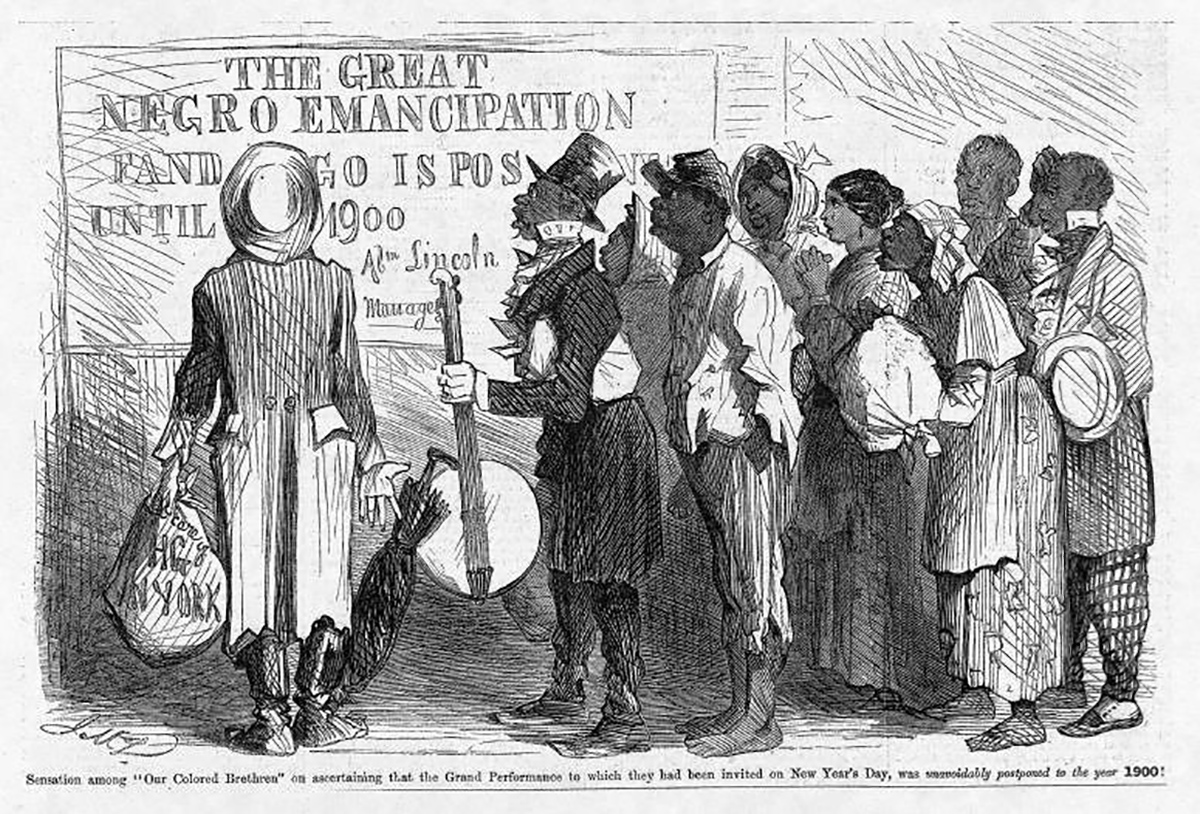The portmanteau word Juneteenth is from the words June and nineteenth and is often called Freedom Day, Jubilee Day, Liberation Day, or Emancipation Day. It signified when the last slaves in Galveston, Texas, were told that they were free on June 19, 1865.
Once the Civil War began, President Abraham Lincoln attempted to get the slave border states to free their slaves but was unsuccessful in convincing them to do so. Not wishing to lose Missouri, Kentucky, Maryland, and Delaware to the Confederacy, he dropped his gradual, compensated emancipation plans.
“The Great Negro Emancipation” cartoon was published in Harper’s Weekly on December 20, 1862, after Lincoln announced his executive order the Emancipation Proclamation on September 22, 1862, to take effect on January 1, 1863. The cartoon criticizes President Lincoln’s polices by poking fun at his plan for gradual emancipation.
In August 1862, Horace Greeley, the radical editor of the New York Tribune, chastised the President in a widely-read editorial for dragging his feet on emancipation. In an open letter to Greeley, President Lincoln responded that if freeing the slaves would help win the war, he would do it, but if not freeing the slaves would help win the war, he would do that. Lincoln and his administration planned to issue an emancipation order following the subsequent Union victory.
Why did it take so long after General Robert E. Lee’s surrender to General Ulysses Grant at Appomattox on April 9, 1865, for Texas to surrender in Galveston on June 19, 1865, to the Union Army and free their slaves? The answer, partly, is in their unique history of Texas’s revolt against Mexico, life as an independent republic, and finally its voluntary surrender to statehood.
At first, Mexico welcomed foreign settlers to the sparsely populated Texas with promised land and generous terms for inhabitation. More than twenty-five thousand Americans responded, and soon there were more Americans than resident Mexicans. The Americans did not assimilate to Mexican culture, and Mexico began to pass laws to limit American immigration and banned the importation of slaves. Texas won exemption from these rules, and by 1835, ten to fifteen percent of the non-Indian population were slaves.
The immigration of slaveholders slowed, and some believed that labor-scarce Texas could only prosper through slave cultivation of crops. By 1835, resistance to Mexico resulted in war for independence. In 1845, Congress accepted Texas into the United States and linked the politics of slavery and expansion.
Look for our next blog entry on the road to Juneteenth Freedom Day
On Juneteenth, by Annette Gordon-Reed, Liveright Publishing Corporation, 2021
The Reader’s Companion to American History, by Eric Foner & John Garraty, Houghton Mifflin, 1991, pp 1065-1066

